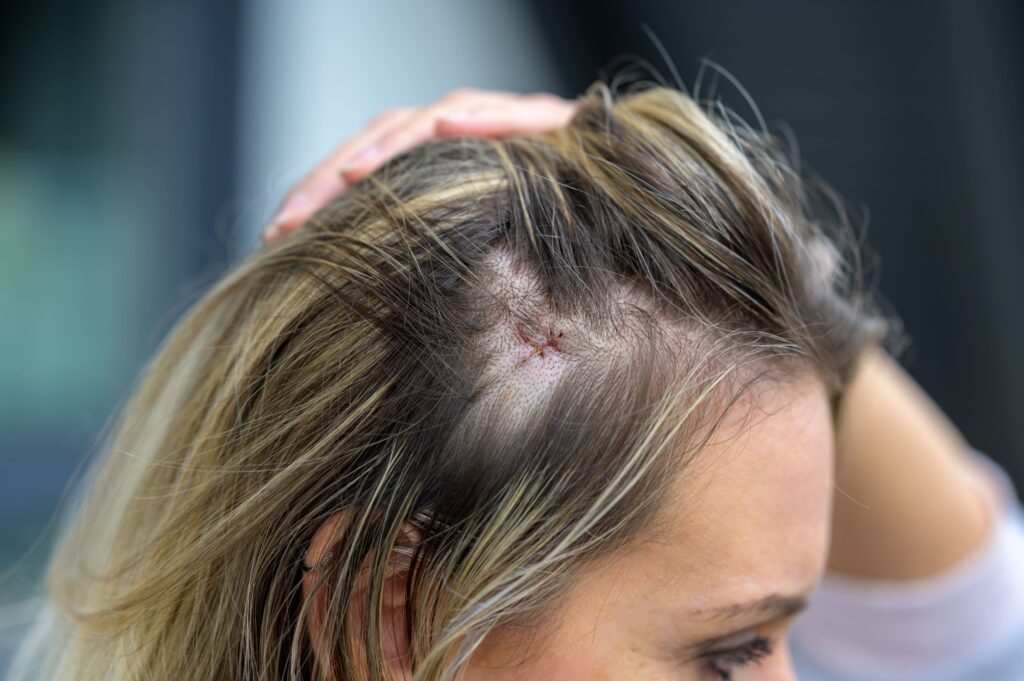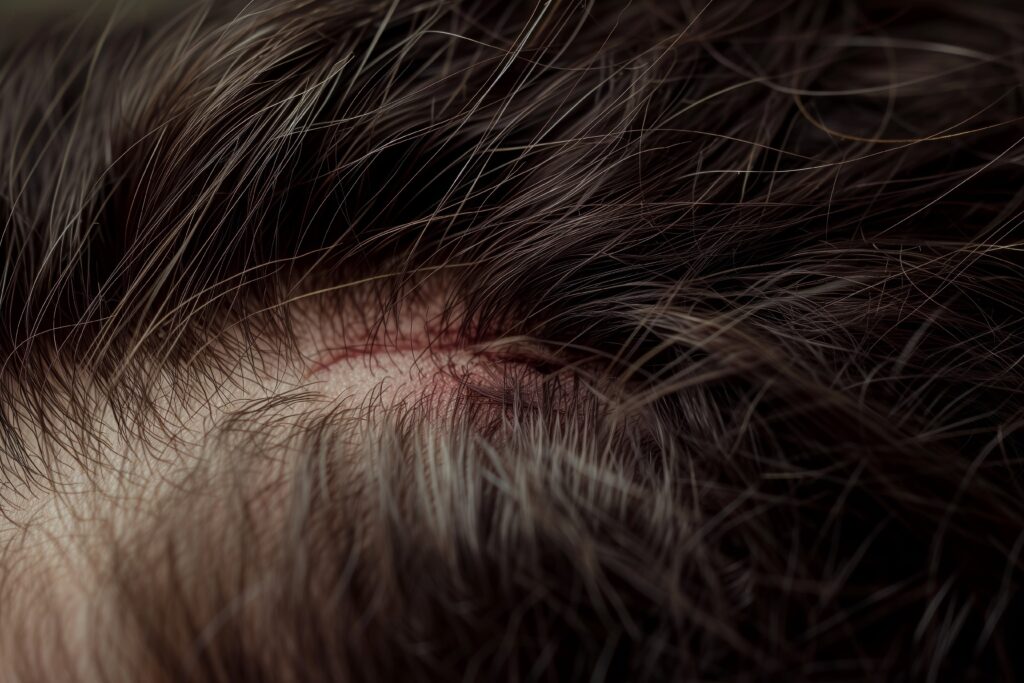Scars on the body are a part of life, and the reality is that most individuals have one or more scars. Scalp scars, in particular, might occur due to an injury, or certain conditions like scarring alopecia. Scars can disrupt the natural hair growth pattern and leave you with bald patches. But the good news is that there are ways you can fix scar hair.
Read on to learn more about why hair struggles to grow on scars and if you can get a hair transplant in Turkey on a scar.
What Is Scar Tissue?

Scar tissue forms when the skin heals from an injury, like surgery, burns, or conditions such as lupus erythematosus or scarring alopecia. Unlike normal skin, scar tissue is thick, less flexible, and often discolored. The healing process in scarred areas usually destroy hair follicles, which is why hair does not regrow there.
Different types of scarring can occur on the scalp. Some are minor, while others, like those caused by burns or surgeries, create larger hairless patches. These scars can be visible, especially if they cover large areas of the scalp.
What Are the Natural Methods to Reduce the Visibility of Scars?
Scars are often stigmatized in society, which is why many people with scars look for ways to help cover them. While hair doesn’t naturally grow on scar tissue, there are a few natural remedies that can fix and reduce the visibility of scars. These methods won’t bring back hair, but they can help scars blend in with the surrounding skin and make them less noticeable:
- Aloe Vera: Aloe vera has anti-inflammatory properties that can help reduce redness and swelling.
- Vitamin E Oil: Applying Vitamin E oil to scars may improve skin elasticity and lighten their appearance over time.
- Coconut Oil: Coconut oil contains fatty acids that can improve skin health and reduce the appearance of scars. Applying coconut oil to the scarred area may help fade scars with time.
- Massage: Gently massaging the scar tissue with moisturizing creams can improve blood flow and potentially soften the scar.
- Anti-inflammatory medication: Medications like ibuprofen can reduce inflammation, potentially minimizing scar size and redness.
Why Hair Doesn’t Grow on Scar Tissue?
Hair doesn’t grow on scar tissue because the injury damages the hair follicles, which are responsible for producing hair. When the follicles are destroyed or blocked by thick scar tissue, it prevents hair growth in that area. Scar tissue is also less nourished than normal skin, meaning it lacks the blood supply needed to support healthy hair growth.
Hair Transplant on Scar: Is It Possible?
Yes, a hair transplant on scar tissue is definitely possible. Hair transplant techniques, such as Follicular Unit Extraction (FUE) and Follicular Unit Transplantation (FUT) offer an effective way to fix scar hair. However, it is usually more complicated than a regular hair transplant.
Healthy hair follicles in unscarred skin get plenty of blood flow, which provides the nutrients they need for hair growth. This skin is also flexible and thin, allowing hair to grow easily.
Scar tissue is different. When the skin gets damaged, hair follicles are destroyed, and can’t produce hair anymore. Scar tissue also has poor blood flow and is stiff, making it harder to perform a hair transplant.
That said, it is still possible to transplant hair on scar tissue. The process may take longer, and you might need multiple surgeries. Choosing a skilled and experienced hair transplant surgeon can improve your chances of getting good results.
What Is the Procedure for a Hair Transplant on Scar Tissue?

To fix scar hair, the process of transplanting hair into scarred areas is similar to regular hair transplant surgery, but it requires careful planning. Here’s how the procedure works.
- Consultation. You’ll meet with a hair transplant surgeon to discuss your hair loss and scar. They’ll examine your scalp and determine if you’re a good candidate for the procedure.
- Hair follicle extraction. The surgeon will use either the FUE hair transplant or the FUT method to extract healthy hair follicles from the donor area. FUE is a minimally invasive hair transplant method that removes individual hair follicles one by one, while involves removing a strip of skin containing hair follicles, and then separating them for transplantation.
- Hair follicle transplantation. The harvested hair follicles are carefully implanted into the scarred areas. This process requires precision to ensure that the transplanted hair follicles are placed at the right angle and depth to mimic natural hair growth.
- Aftercare. After the procedure, you will receive instructions on how to care for your scalp during the healing process. It may take several months to see the full results as the transplanted hair grows in the scarred area.
Why Choose Cosmedica for Hair Restoration?
When considering a hair transplant procedure to fix scar hair, it’s important to choose the right clinic. Cosmedica Clinic in Istanbul is one of the leading clinics hair transplant procedures. Cosmedica uses advanced techniques like the DHI Sapphire method to achieve natural-looking results. The clinic has a strong reputation, which is evident in their impressive hair transplant before and after photos showing thousands of successful transformations.
Ready to take the next step? Schedule a free consultation and discuss your hair goals with our team. Let Cosmedica help you achieve the thicker, fuller hair you deserve!
